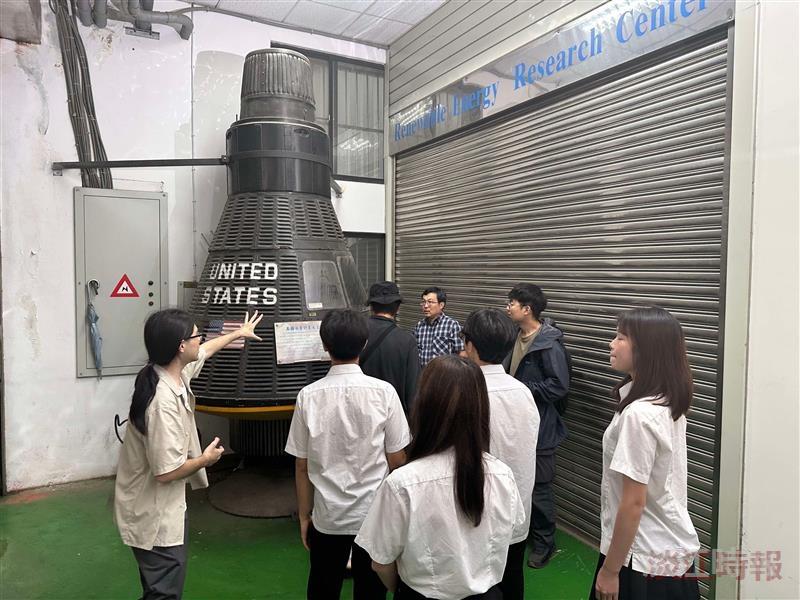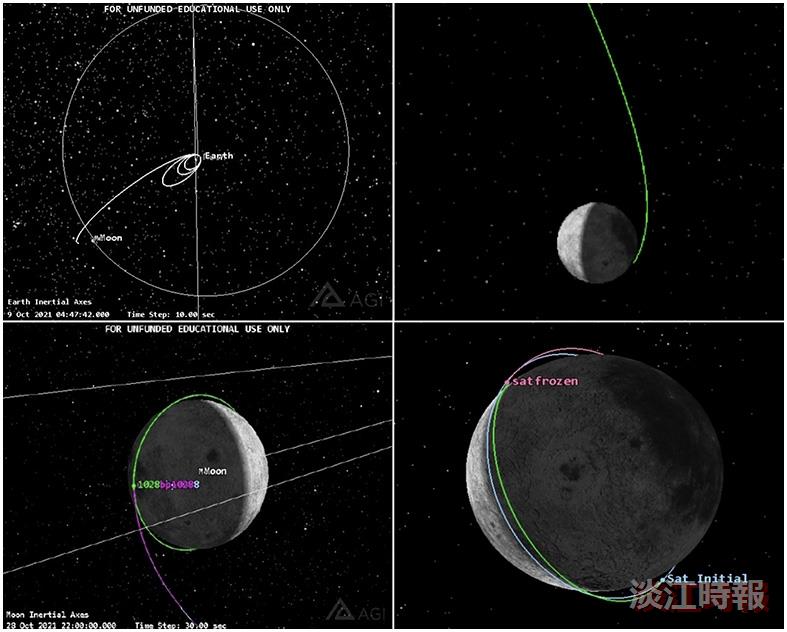News and Events
Taiwan’s Only Private University: Aerospace Engineering Department Launches Lunar Exploration Project
Date 2025-04-11 19 Clicks

The Department of Aerospace Engineering at Tamkang University has recently relaunched research related to deep space exploration, with lunar exploration set as the initial target. A three-year feasibility study has been initiated, showcasing the department’s strong capabilities and ambition in the space sector. Professor and Department Chair Fu-Yuen Hsiao stated that Tamkang is the only private university in Taiwan engaged in this area of research, and the results will serve as valuable references for the country’s future space programs.
In recent years, many countries have launched lunar exploration missions. Taiwan also made its debut in lunar missions in January 2025, when the Department of Space Science and Engineering at National Central University sent its self-developed Deep Space Radiation Probe (DSRP) aboard Japan’s HAKUTO-R Mission 2 lunar lander, marking a new chapter in Taiwan’s international lunar endeavors. Hsiao emphasized that Taiwan should consider independently deploying a lunar probe beyond international collaborations. Tamkang University is currently the only university in the country capable of planning such a mission.
Hsiao explained that this new research effort builds upon the outcomes of the 2020 project he led for the Taiwan Space Agency (TASA), titled "Simulation and Evaluation of Earth-Moon Transfer Trajectories and Lunar Orbits." That earlier project primarily explored Taiwan's preliminary feasibility of a lunar mission. Still, it did not delve deeply into challenges such as orbital plane changes, lunar capture uncertainties, or scientific operations after reaching the Moon. The new study will conduct a more comprehensive technical and mission feasibility assessment. Assistant Professor Kaiti Wang has joined the team to design scientific payload concepts, aiming to enhance the practicality and realization of the feasibility study.
Hsiao further noted that the 2020 team employed the Phasing Loops method to design the Translunar Injection Trajectory, from which they derived the Lunar Insertion Orbit and Lunar Polar Orbit, laying a theoretical foundation for subsequent lunar mission studies. For orbit design in the new project, the team will continue to use the Phasing Loops method while also exploring the application of low-energy transfer techniques, referencing the lunar mission trajectories recently implemented by Japan and South Korea to improve mission efficiency and cost-effectiveness.
Tamkang’s Aerospace Department has previously executed TASA research projects and launched 3 sounding rockets successfully. It has also been actively pursuing international collaborations, including space cooperation projects with institutions in Poland, achieving significant milestones. The department also participates in National Cheng Kung University's Taiwan Lilium CubeSat constellation research project, where it is responsible for designing novel orbital control methods. This new venture into deep space exploration further highlights Tamkang University’s growing potential and contributions in space technology.
SDGs #SDG04 Quality Education #SDG09 Industry, Innovation and Infrastructure #SDG17 Partnerships for the Goals

The Mercury spacecraft from the U.S. Mercury Project, preserved by Tamkang University's Department of Aerospace Engineering. This spacecraft was donated to the department for educational purposes after being exhibited in Taiwan as part of an early U.S. space program display. The photo shows high school students visiting and taking pictures with the spacecraft.

A complete simulated trajectory map for lunar exploration designed for the 2020 project "Simulation and Evaluation of Earth-Moon Transfer Trajectories and Lunar Orbits"
LINKS
- PREV:Dr. Sohail Inayatullah Featured in University World News Interview, Praises Tamkang’s Strength in Futures Studies 2025-04-10
- NEXT:Interpreting Plague Deities in East and West: Paul Katz Highlights How Religious Rituals Soothe the Human Spirit 2025-04-14
- Ping-Cheng Yeh Urges Students to Embrace 4 Workplace Traits to Find Their Place in a Changing Environment 2025-04-21
- 【Department Spotlight】Physics Faculty Hung-Chung Hsueh and Hsi-An Pan Publish Research in Leading International Journal 2025-04-20
- 【Department Spotlight】4 Architecture Alumni Admitted to Columbia University’s Graduate School of Architecture Through Perseverance 2025-04-18
- Tamkang University Commissioned by the Ministry of Education Again to Assist Universities in Improving Energy Efficiency Measures 2025-04-17
- Interpreting Plague Deities in East and West: Paul Katz Highlights How Religious Rituals Soothe the Human Spirit 2025-04-14
- 300 Indonesian Students Gather at Tamkang for Sports Olympics to Promote Intercollegiate Exchange 2025-04-13
- Taiwan’s Only Private University: Aerospace Engineering Department Launches Lunar Exploration Project 2025-04-11
- Dr. Sohail Inayatullah Featured in University World News Interview, Praises Tamkang’s Strength in Futures Studies 2025-04-10
- 4 Student Clubs Shine in Annual Evaluation; Robotics and Wind Ensemble Clubs Win Top Honors Again 2025-04-09
- International Students' Ecological and Cultural Exhibition Showcases Diverse Cultures and Sustainability Action 2025-03-31